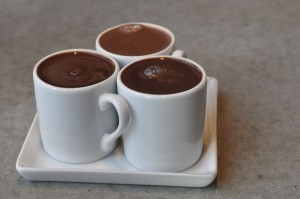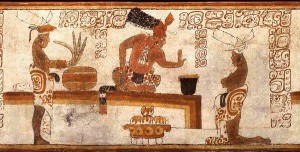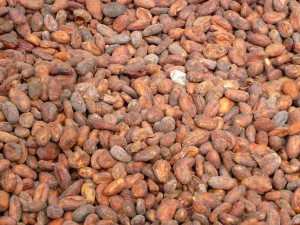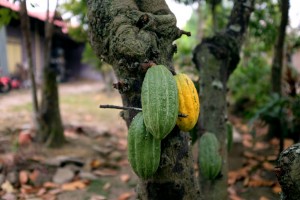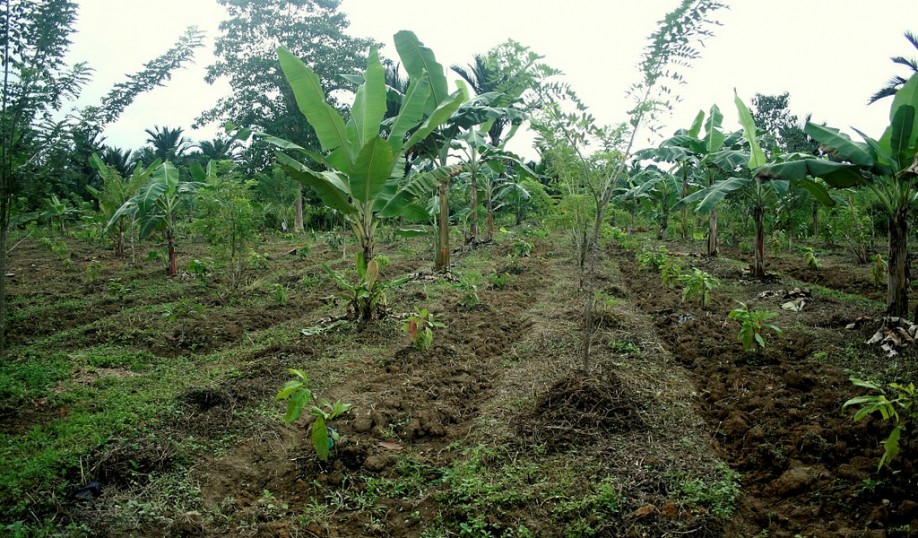Barb Stuckey, a food developer, writes, “One of the most seductive qualities of good chocolate is that it melts precisely at human body temperature, which provides a textural experience unlike any other food. This fact makes chocolate one of nature’s most perfect foods” (Stuckey 44) These thoughts come from a book written about the science of taste – not chocolate. Why do such powerful and sexual words feel routine when discussing chocolate? This blog post argues that of all the fetishized commodities, chocolate is most closely linked to gender. Chocolate’s historical and mythological origins have morphed into media-hyped sexism. Men consume by purchasing, women consume by “indulging.” This hype has manifested as insincere cravings which are then linked to disordered eating in women. Lastly, chocolate has become feminized and sexualized while men remain in control of the production and distribution of chocolate.
Chocolate in Advertising
If you’re old enough to have watched television in the US, you most likely don’t need visual evidence of the hyper-sexualized depiction of women with chocolate. If you’re not, here is a quick survey of contemporary depictions of the female/chocolate relationship in advertising:
- chocolate sold to women as a sexual fantasy
- as substitute (women holding bars to their mouths, lying in beds with their eyes closed eating chocolate)
- sold to the people (through provocative advertisements) who want to seduce women as a flirtatious, necessary element in a woman’s life.
This isn’t unique to the 20th or 21st Century. Victorian ladies were dealing with suggestive ads as well, although: “the gift of chocolate operated within the bounds of accepted cultural rituals but privately represented elements of sexual drive. In other words, public eroticism displayed in packaging was permissible. within Victorian refinement provided that established male–female courtship protocols were adhered to.”(Grivetti 45) To experience the truth of this claim, I recommend a stroll through an aisle ready for Valentine’s day.
Craving Chocolate
It’s impossible not to wonder how the great deal of symbolism in chocolate influences consumption; even without the space to tackle the agency/structure debate. In Beyond Cravings: Gender and Class Desires in Chocolate Marketing, Jamil Fahim asserts that chocolate is the most craved food, pointing out that terms like “chocoholic” and “chocolate addiction” are in everyday use. Fahim argues that chocolate promises to transform the consumer (Fahim 15). “At first glance, chocolate advertising appears to cater to base appetites, but it simultaneously arouses appetites of a social nature by promising to satisfy viewers’ deep-seated desires for sexual fulfillment and higher class status.” (Fahim 2)
Willa Michener and Paul Rozin explored physiological versus sensory cravings in chocolate. They gave each self-rated chocolate craver a chocolate bar, the pharmacological equivalent in capsule form, a placebo, and a white chocolate bar. The participants cravings were only abated by the chocolate bar, and a few cravings were slightly reduced by the white chocolate. The capsules showed no effect. They concluded: “Data indicate no role for pharmacological effects in the satisfaction of chocolate craving.” (Michener 1994)
Chocolate and Disordered Eating
Bliss. Ecstacy.
Silky. Love.
Decadent. Sinful.
Words we generally save for intimate moments are often bandied about when describing chocolate. We simultaneously talk about the casual consumption and health benefits of chocolate while mentioning its extravagance. Sarah Gould writes “Chocolate is still a guilty pleasure for women, something they are supposed to crave but equally not supposed to give into without compensatory gym time.” in her piece on chocolate and gender. As early as 1698, chocolate was blamed for making the women of Paris “fat” (Grivetti 172). A study published in 2014 entitled “Chocolate craving and disordered eating. Beyond the gender divide?” linked disordered eating with chocolate cravings and postulated that chocolate cravings were significantly higher among women in North America than in other countries. Fahim writes that while we typically associate addiction with drugs and alcohol more studies are being conducted to prove that chocolate can elicit similar psychological responses (12).
Gendered Patterns of Consumption in Farming
Cocoa production is “deemed a ‘male-crop’” in Ghana and India, while women work behind the scenes as unpaid labor or low-wage casual labor, consistently taking the subordinate role in the growing of cacao. (Barrientos 2014)
Can Feminists Eat Chocolate?
Chocolate is hedonistic as well as part of the North American woman’s selfhood. The symbols woven in and out of chocolate make it necessary to approach this relationship with reflexivity. The over-fetishization of chocolate enables the people who produce it to benefit (way more so than the grower) and obscures the relationship between the consumer and the symbol. The disempowerment of chocolate may be necessary to dismantle the constructs of patriarchal and capitalistic domination.



